Bestseller
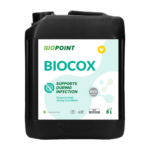



We are glad that you noticed our unique products. To request samples of our products, please provide us with your details. We will contact you to verify and fulfill your request.
We are glad that you would like to receive a leaflet about this product. In order to send it to you, please provide us with your e-mail address to which we will send our leaflet.
If you have any questions or concerns, we are always at your disposal and will be happy to answer any messages. Fill in the form below and we will get back to you immediately.
Product type: liquid
Available capacity: 1L, 2L, 5L
BIOCOX effectively supports organisms in the fight against coccidiosis, by directly acting on protozoa and influencing the local immunity of birds. It can be used prophylactically and also when coccidiosis occurs on the farm, helping to reduce economic losses related to the course of infection. BIOCOX ingredients limit the development of coccidiosis by influencing the physiological processes of protozoa, including: disrupting enzyme function, integrity of cellular structures, and the life cycle of parasites. They support the immune system in the fight against parasites. They also increase birds’ appetite and digestion processes, which are extremely important due to the risk of a decrease in performance during infection. In addition, BIOCOX ingredients present beneficial effects on the processes of bile formation and secretion, which is the body’s natural antiparasitic weapon in the digestive tract.
Supports weight gain
| How to dose Biocox? |
|---|
| Standard: 500 ml/1000 l of drinking water, in ½ of the daily water drunk, for 3-5 days |
| In case of very severe symptoms: 1000 ml/1000 l of drinking water, in ½ of the daily water drunk, 3-5 days |
| Depending on the clinical condition of the birds: 1000 ml/1000 l of drinking water, in ½ of the daily water drunk, for 3-5 days. |
| Support during | Supportive product | Why provide a supporting product? | How to dose a supporting product together with Biocox? |
|---|---|---|---|
| Coccidiosis | SALIVET PLUS | To support in times of inflammation | 250-500 ml/1000 l of drinking water, in the second ½ of the daily water drunk, 5-7 days Do not use together (in same water) with Biocox |
| BIOLAX PLUS | In case of diarrhea caused by coccidiosis, in order to limit it | 500-1000 ml/1000 l of drinking water, in the second ½ of the daily water drunk, 3-5 days Do not use together (in same water) with Biocox | |
| Coccidiosis and co-infection caused by anaerobic bacteria | CLOSTRIC | To reduce infection caused by anaerobic bacteria | 500 ml/1000 l of drinking water, in the second ½ of the daily water drunk, 3-5 days Do not use together (in same water) with Biocox |
| MULTI ACTIV | To support the pH balance of the digestive tract contents and enhance the effect | 500-1000 ml/1000 l of drinking water, in ½ of the daily water drunk, 3-5 days It can be used together (in same water) with CLOSTRIC | |
| Histomonasis | BOOSTER | To support immunity | 250-500 ml/1000 l of drinking water, in ½ of the daily water drunk, 3-5 days |
Chicken broiler ROSS 308, 40 000 pcs., henhouse K3, Podlaskie voivodeship
Anatomopathological examination revealed:
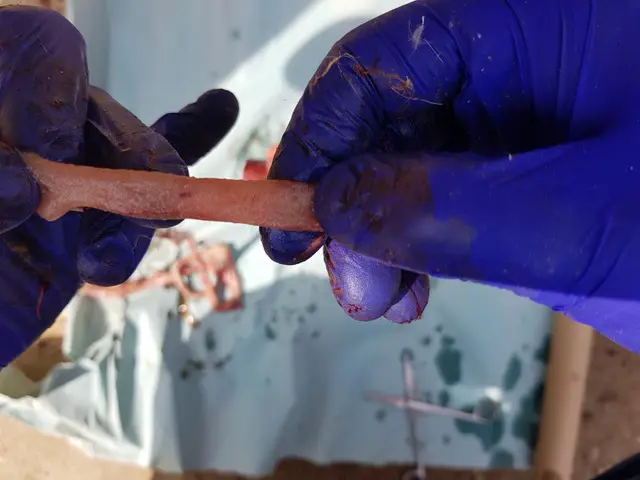
Fig. 1 – white, punctate lesions in the duodenum
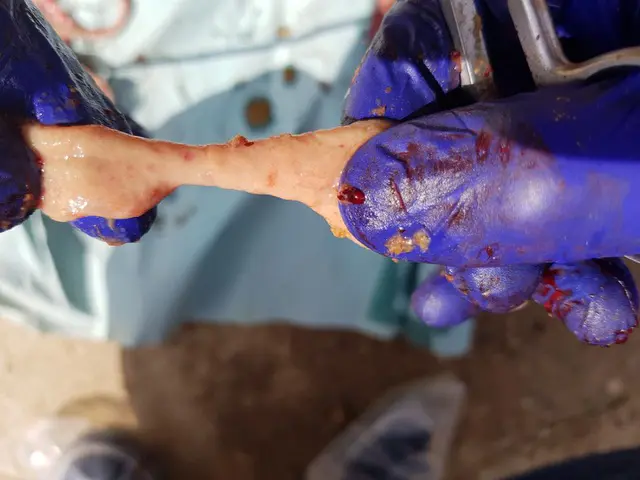
Fig. 2 – local petechiae within the intestinal epithelium
Quantitative parasitological examination, McMaster chamber method according to Raynaud.
On day 25, the sample examined showed: 91,000 oocysts/1 g of faeces
INWAZJA EIMERIA SPP.
BIOCOX in a dose of 500 ml/1000 l of drinking water, in ½ of the daily water drunk, for 3 days (from day 25 to 27)
On the 27th day, the herd was reassessed and the anatomopathological and parasitological examinations were repeated. A clear reduction in indigestion was observed (less feed was observed in stool), the herd is more balanced than before the start of the therapy. The anatomopathological examination did not reveal changes characteristic of Eimeria spp. invasion.
Parasitological examination revealed: 22,000 oocysts/1 g faeces.
After treatment, the herd stabilized. There were no anatomopathological changes characteristic of Eimeria spp. invasion in the intestines. There was a significant reduction in the number of oocysts in 1 g of faeces (data presented in Table 1). After the therapy, the herd stabilized. There were no anatomopathological changes characteristic of Eimeria spp. invasion in the intestines. There was a significant reduction in the number of oocysts in 1 g of stool (data presented in Table 1). At the end of the production cycle, the birds compensated for the loss of body weight gain caused by the infection. The average body weight at the end of the flush was 2.98 kg (for a cycle duration of 40.8 days), the feed conversion ratio was 1.62. In the summary of production parameters, despite the occurrence of coccidiosis, this flush was successful – EWW coefficient 429.5.
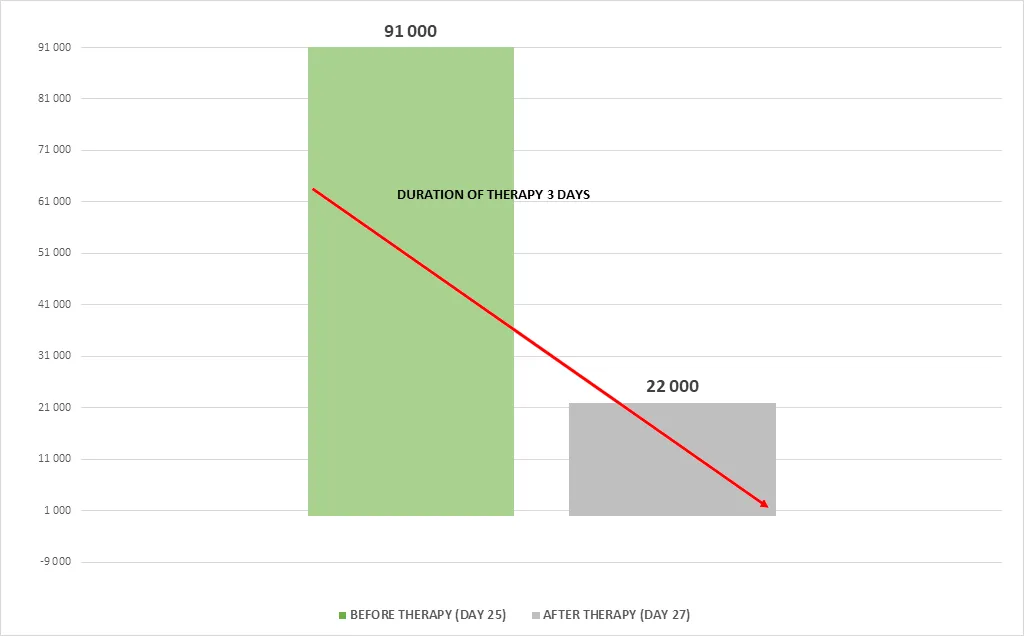
Table 1. Number of oocysts in 1 g of stool.
Chicken broiler ROSS 308, 25 000 pcs., Podlaskie voivodship
On the 26th day of the birds’ life, a slight diversification of the flock was observed and the number of daily mortality increased to 40 birds per day.
Anatomopathological examination revealed changes in the duodenum:
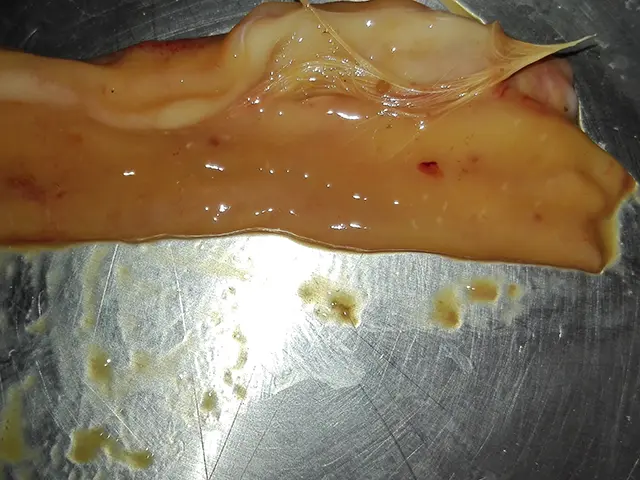
Fig. 1
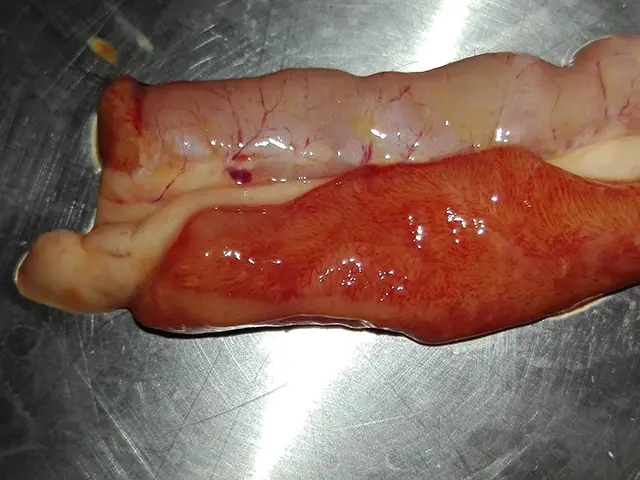
Fig. 2
Quantitative parasitological examination, McMaster chamber method according to Raynaud.
On day 26, 56,400 oocysts/1 g of faeces were found in the sample examined
EIMERIA SPP INVASION. (most probably E. acervulina)
BIOCOX in a dose of 1000 ml/1000 l of drinking water, continuously administered for 5 days
On day 36, the herd was reassessed. The anatomopathological and parasitological examination was repeated.
After treatment, the herd stabilized (Fig. 3) and the number of daily mortality decreased (Table 1). Anatomopathological examination did not reveal any changes characteristic of Eimeria spp. invasion (Fig. 4 and 5). In one case, petechiae and swelling of the jejunal mucosa were found (Fig. 6).
On day 36, parasitological examination revealed 1,300 and 1,600 oocysts/1 g of faeces in two samples.
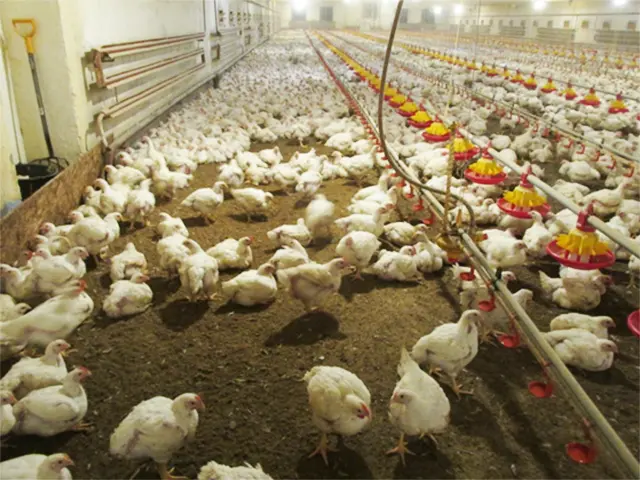
Fig. 3
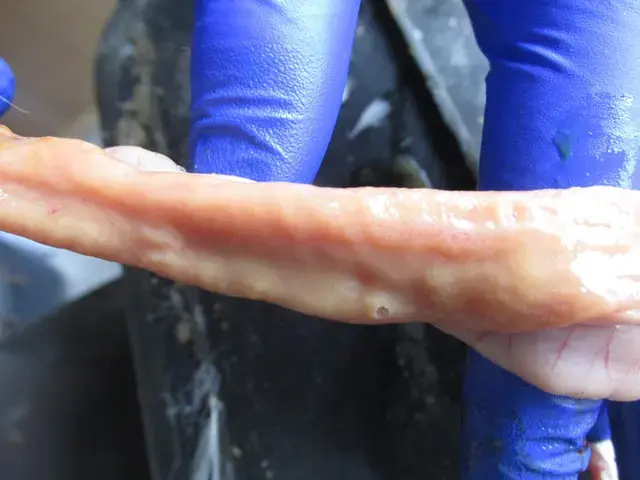
Fig. 4
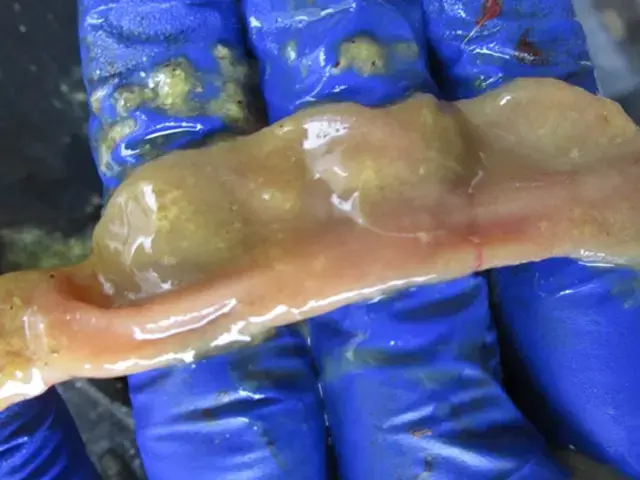
Fig. 5
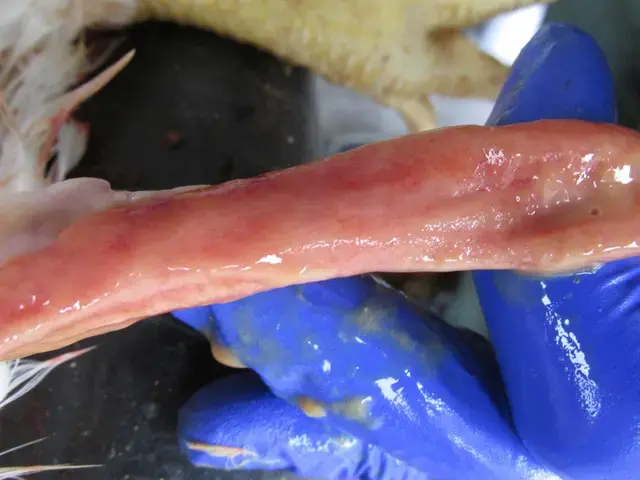
Fig. 6
After using Biocox, a reduction in the number of mortality was observed (Table 1), the herd became more stable, the intensity of anatomical changes in the duodenum was reduced, and the number of oocysts in 1 g of stool was significantly reduced (Table 2).
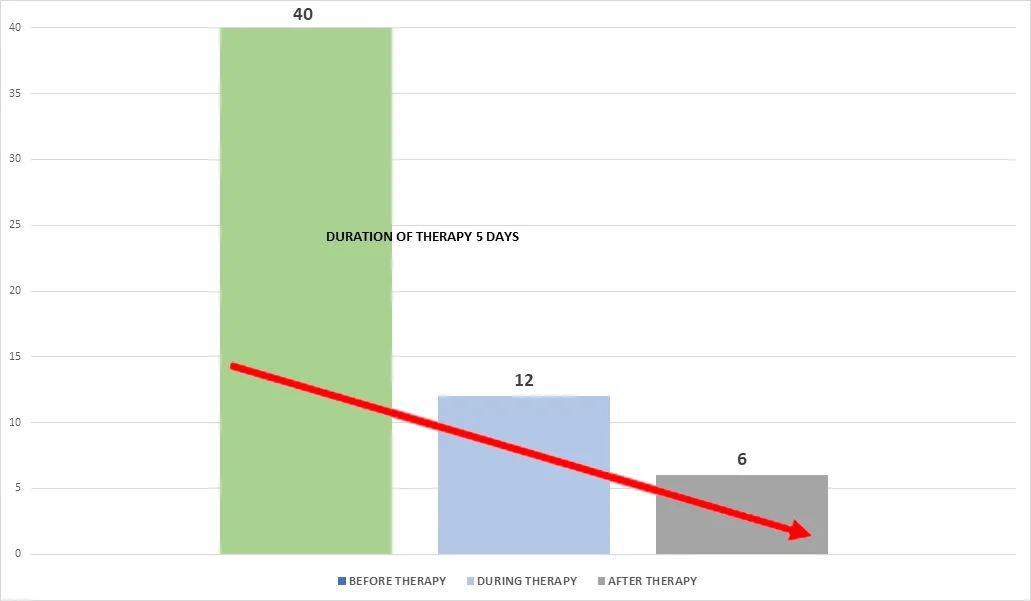
Table 1 Daily mortality of birds.
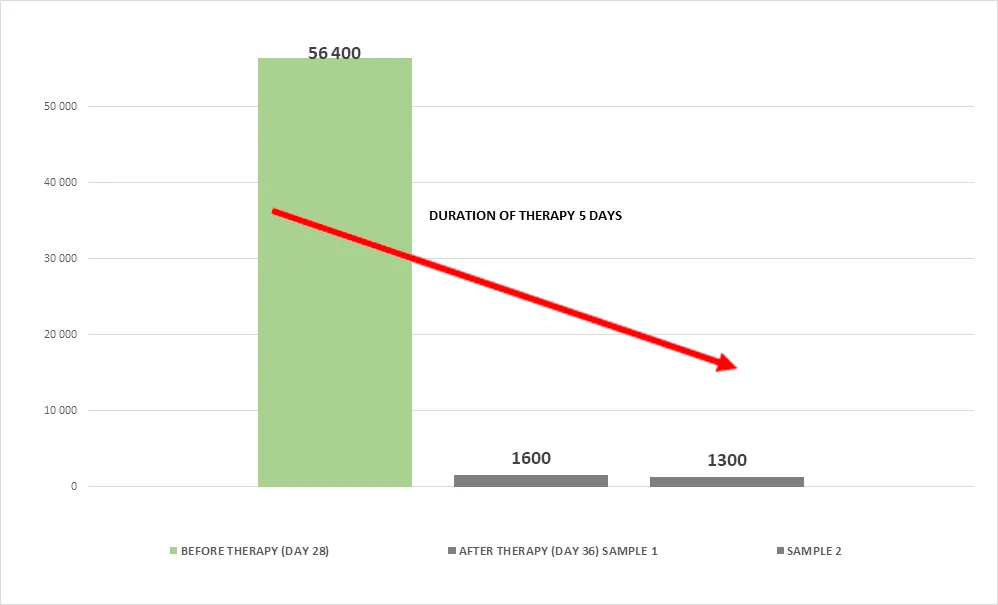
Table 2 Number of oocysts in 1 g of faeces.
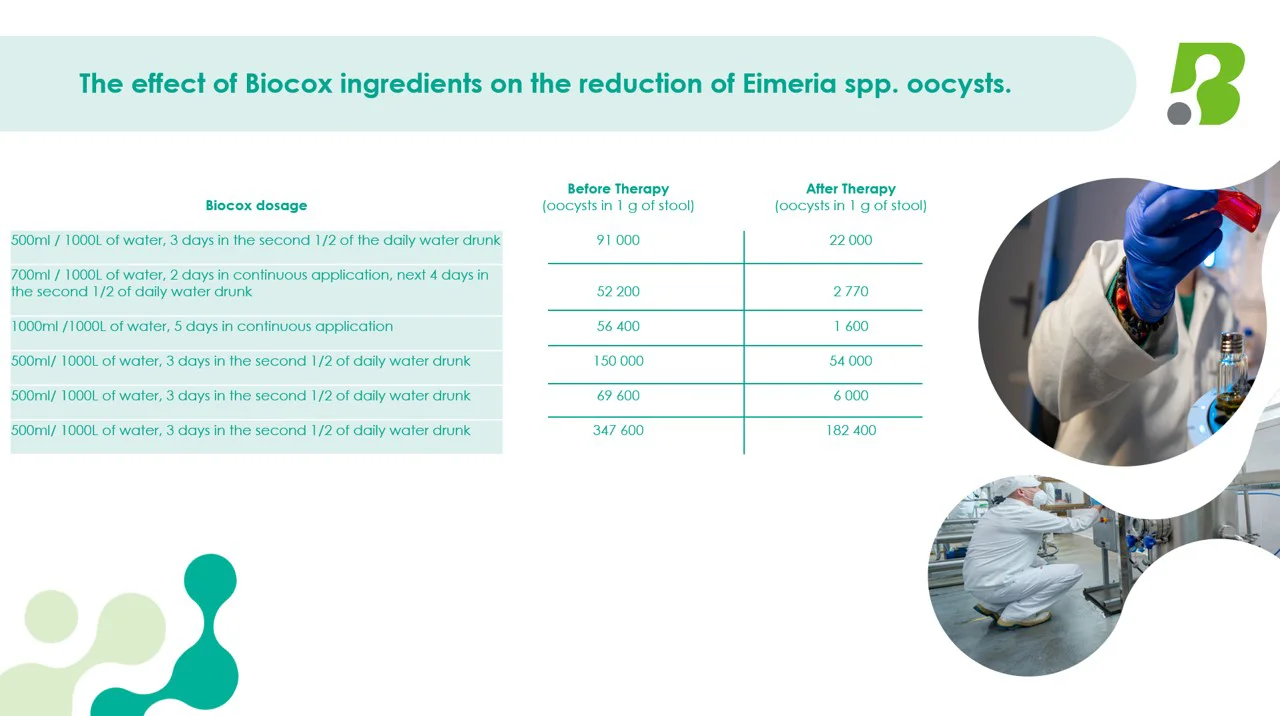
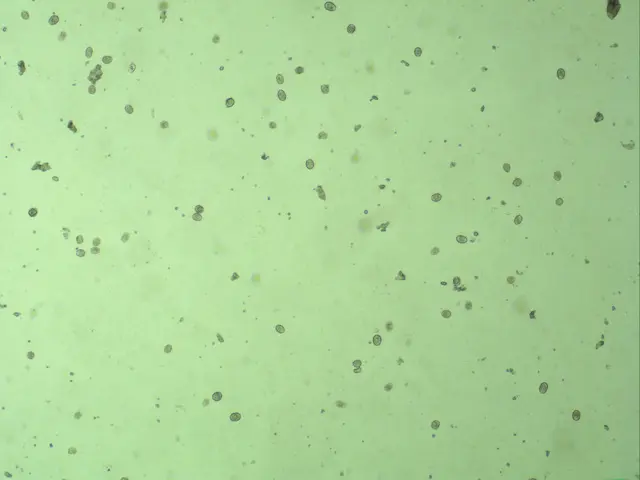

All-In Technology is a patented technology for obtaining and standardizing herbal preparations. Each production stage is subject to strict control, from the selection of raw materials, through extraction, to the creation of the finished product.
Key features of patented all-in technology:

FEED MATERIALS:
propylene glycol (13.11.1), glycerin (13.8.2)
FEED ADDITIVES:
Sensory additives: Flavoring substances: Mixture of flavoring substances;
Dietary additives: Vitamins: Vitamin B2 (riboflavin phosphate in the form of sodium salt) (3a826) – 400 mg;
Technological additives: Emulsifiers: Polyoxyethylene castor oil (E484) – 415,000 mg